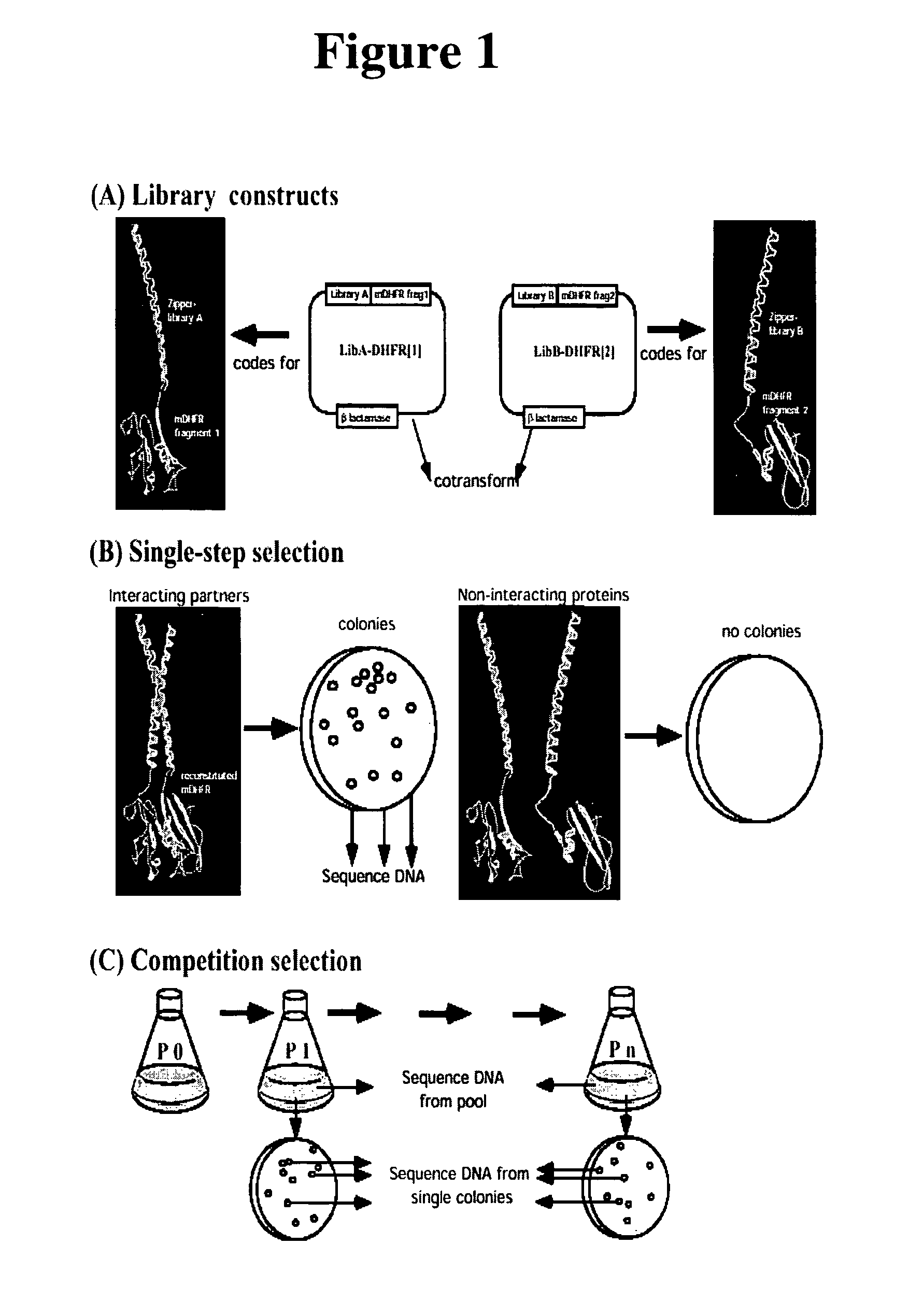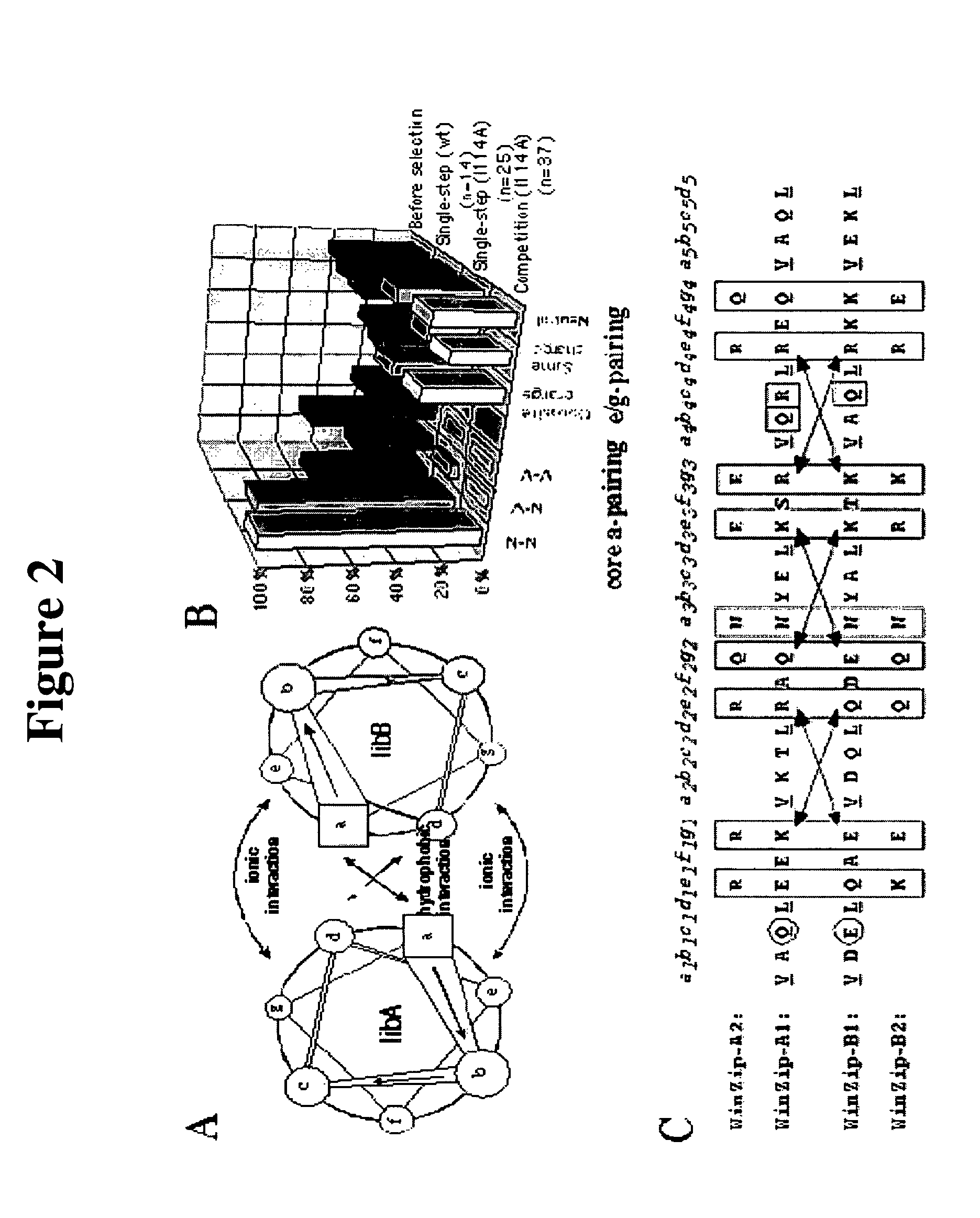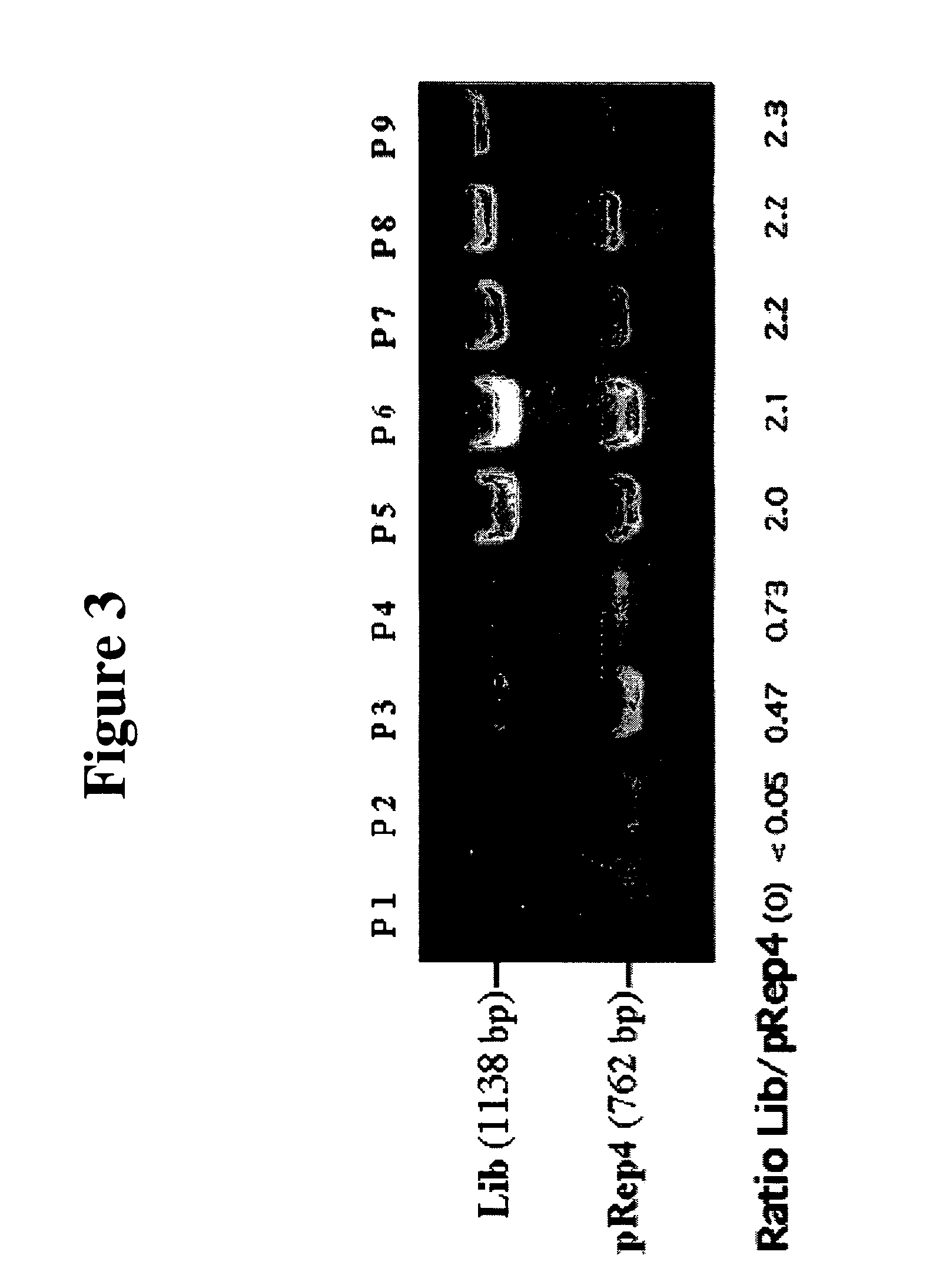In vivo screening of protein-protein interactions with protein-fragment complementation assays
a protein-protein interaction and complementation assay technology, applied in the field of molecular biology, cell biology, biochemistry, can solve the problems of limited yeast two-hybrid system and no large-scale library-vs-library selection of protein-protein interactions
- Summary
- Abstract
- Description
- Claims
- Application Information
AI Technical Summary
Benefits of technology
Problems solved by technology
Method used
Image
Examples
example 1
[0053]In order to demonstrate a large-scale library-vs-library selection based on the mDHFR PCA, we screened two designed libraries of complementary heterodimeric coiled-coil forming sequences against each other. Our goal was to determine if the strategy would select interacting peptide pairs in which amino acids at the semi-randomized positions are similar to those observed in naturally-occurring or successfully designed coiled-coils which form stable heterodimers (see refs 10-12, for example). Further, it is not currently possible to predict sequences of coiled coil-forming peptides that will simultaneously have high stability and heterospecificity as well as advantageous in-vivo properties, such as resistance to proteases. In the present approach, the heterodimerizing peptides will have such characteristics by the nature of their selection. This is crucial to practical applications of optimal interacting heterodimers for in vivo studies of protein oligomerization, e.g. the design...
example 2
[0060]Use of the mDHFR Ile114Ala mutant in PCA. We repeated the single-step selection, using the Ile114Ala mutant of mDHFR (4,5) in order to increase the stringency of selection. We reasoned that only library partners that form the most stable heterodimers can compensate for the reduced ability of the mDHFR(Ile114Ala) fragments to fold into active enzyme, resulting in higher enzyme activity and growth rates. When bacteria were cotransformed with LibA-DHFR[1] and LibB-DHFR[2:I114A], we observed a 50-fold decrease in the number of colonies upon selective plating compared to the wild-type DHFR fragments (Table 1). Twenty-five colonies were picked from 3 independent cotransformations and the DNA sequences were analyzed. The increase in selectivity was concomitant with an extremely strong selection for N-N pairing at the core a-position (92%; FIG. 2B), illustrating that the specificity of in-register parallel alignment provided by N-N pairing is more highly favored under these in-vivo se...
example 3
[0061]Competition selection: Efficiency of selection. To further increase the selection pressure, we applied the principle of competition selection. We reasoned that, among selected zipper pairs, those which result in more stable heterodimerization will allow the most efficient enzyme reconstitution, leading to higher DHFR activity. If DHFR activity is limiting for growth, the higher activity should result in more rapid bacterial propagation, hence these cells would become enriched in a pool. Thereby, after sequential rounds of growth-competition, subtle differences in growth rate can be amplified, increasing the stringency of selection relative to the single-step selection.
[0062]To determine the rate at which competition can enrich for particular partner pairs, we first set up a model competition with a limited number of clones as described in FIG. 1C. The initial cell mixture (P0) contained known amounts of viable cells expressing either GCN4-DHFR[1] / GCN4-DHFR[2:I114A] or one of s...
PUM
| Property | Measurement | Unit |
|---|---|---|
| Fluorescence | aaaaa | aaaaa |
| Interaction | aaaaa | aaaaa |
Abstract
Description
Claims
Application Information
 Login to View More
Login to View More - R&D
- Intellectual Property
- Life Sciences
- Materials
- Tech Scout
- Unparalleled Data Quality
- Higher Quality Content
- 60% Fewer Hallucinations
Browse by: Latest US Patents, China's latest patents, Technical Efficacy Thesaurus, Application Domain, Technology Topic, Popular Technical Reports.
© 2025 PatSnap. All rights reserved.Legal|Privacy policy|Modern Slavery Act Transparency Statement|Sitemap|About US| Contact US: help@patsnap.com



